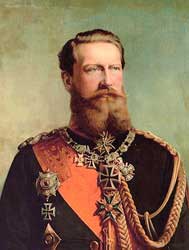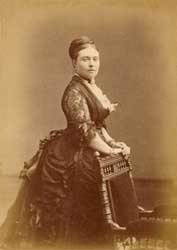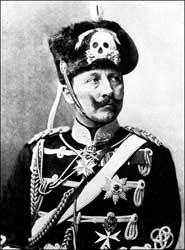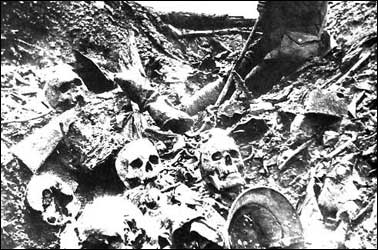Frederick
the Great of Prussia (1712–1786). |
Frederick was a GREAT British spy because he kept his true identity completely hidden.
Frederick
the Great of Prussia (1712–1786). |
Frederick was a GREAT British spy because he kept his true identity completely hidden.
|
In 1521, Pope Leo X conferred on King Henry VIII the pompous title Fideo Defensor or Defender of the (Latin) Faith for writing a Latin tome entitled Defence of the Seven Sacraments. That book, ghostwritten by Sir Thomas More, was a refutation of the Babylonian Captivity of the Church by Saint Martin Luther.
The Prussian monarchy was founded by British spies in 1701. King Frederick I was its first king. Prior to that time, the rulers of the various German states were called ELECTORS.
The Vatican approves of one type of government ONLY: ABSOLUTE HEREDITARY MONARCHY....Any government based on elections, or the will of the people, she does her utmost to destroy!!
In order not to offend the Emperor of the Germans, Frederick I slyly referred to himself as king in Prussia.
Pope Benedict XIV (1740–1758) was the first Pope to recognize the title: King of Prussia, and the title was officially recognized by all the other nations in 1772.
|
Sophia Charlotte of Hanover was the queen consort of King Frederick. She was also the mother of his successor, Frederick William.
In 1714, her eldest brother, George Lewis, succeeded to the throne of Great Britain as King George I.
|
Queen Elizabeth II is descended from the Hanovers and her coins bear the pompous title Fidei Defensor (Defender of the (Latin) Faith).
Two of the cardinal doctrines of the "Christian" Faith are the Resurrection of Christ from the dead and Christian burial. Most of the Queen's subjects reject these cardinal doctrines of Christianity and embrace deadly Druid cremation instead.
|
Frederick William's only passion was the military. He had a special regiment of very tall soldiers and even forced tall women to marry tall soldiers so they could breed more tall boys.
|
Here is a quote from a history of Prussia written in 1871:
By severe economy, small as were his realms, and limited as were his revenues, he raised an army of nearly a hundred thousand men. An imposing army seemed to be the great object of his ambition. He drilled his troops, personally, as troops were never drilled before. Possessing an iron constitution, and regardless of comfort himself, he had no mercy upon his soldiers. Thus he created the most powerful military engine, for its size, ever known upon earth. (Abbott, Prussia and the Franco-Prussian War, p. 12).
In 1740, King Frederick William I died and his son, Frederick II, assumed the Prussian throne.
His long-term goal was to raise Prussia to the status of a major power and attempt to revive the moribund German empire (the Holy Roman Empire) but with Protestant Prussia, not Roman Catholic Austria, as its natural leader. (Asprey, Frederick the Great, p. 149).
The Militia of Zeus and Minerva have always disguised their aims by using Protestant countries as their proxies to conquer their foes.
|
Frederick was not interested in female sex and was only happy when he was aggrandizing his kingdom:
His nominal wife he recognized in public as queen, and ever treated her, when it was necessary that they should meet, with cold civility. Gradually these meetings grew rare, until, after three or four years, they ceased almost entirely. Frederick was anxious to embellish his reign with men of literary - and scientific celebrity. He established an academy of sciences, corresponded with distinguished scholars in other parts of Europe, and commenced correspondence and intimate friendship with Voltaire. (Abbott, Prussia and the Franco-Prussian War, p. 32).
He died without children and Frederick William II (the second son of King Frederick William I of Prussia) became king.
From 1740 to 1748, a worldwide conflict raged which has been called the War of the Austrian Succession. This war, involving all the powers of Europe, can be considered the first real global conflict.
|
Frederick saw a young and inexperienced woman on the throne so he was expecting a quick conquest of Silesia. Like Hitler's invasion of Russia, he underestimated his opponent.
All
the participants of the War of the Austrian Succession. Blue:
Austria, Great Britain, the United Provinces with allies.
Green: Prussia, Spain, France with allies. |
Maria Theresa fought back like a tigress and the Silesian conquest developed into a world war:
But Maria Theresa developed character which alike surprised Frederick and all Europe. The chivalric spirit of the surrounding monarchies was enlisted in behalf of' a young queen thus unjustly assailed, and despoiled of an important province of her realms. The preparations which Maria Theresa made to regain her lost possessions induced Frederick to send an army of sixty thousand men into Silesia to hold firmly his conquest. A terrible war was the consequence–a war in which nearly all the nations of Europe became involved, and which extended even to the distant colonial possessions of England and France. Millions of money were expended, hundreds of thousands of lives sacrificed, cities sacked, and villages burned; while an amount of misery was spread through countless homes which no imagination can gauge. (Abbott, Prussia and the Franco-Prussian War, pp. 34-35).
After 8 years of bitter conflict, a truce was finally signed in 1748. Under the Treaty of Aix-la-Chapelle, Prussia was allowed to hold on to the conquered territory of Silesia.
Empress Maria Theresa was still determined to get back Silesia and this led to the second worldwide conflict called the Seven Years' War.
After the conquest of Silesia, Frederick had time to rebuild his army and prepare for the next conflict called the Seven Years' War:
Maria Theresa, ever anxious to regain Silesia, entered, with that object in view, into a secret alliance with Elizabeth, Empress of Russia, and with Augustus III. of Poland. Both Elizabeth and Maria Theresa entertained a very strong personal dislike for Frederick. The Marchioness of Pompadour, who ruled France, had considered herself insulted by the sarcasms of his Prussian majesty. Anxious for revenge, she also joined the alliance. It so chanced, at that time, that three women ruled Continental Europe. These three women were arrayed against Frederick. Thus, in addition to the important diplomatic issues which were involved, personal pique envenomed the conflict. There were also many rumors that Frederick was contemplating additional conquests. Frederick, by bribery, became acquainted with the plan of the coalition. It was nothing less than taking possession of Prussia, and essentially dividing it between them; leaving to their vanquished foe, perhaps, a small duchy or marquisate. The king resolved to anticipate his foes, and to strike them before they had begun to move. France was at that time at war with England, and hoped to take Hanover. This led the British court, trembling for its Continental possession, to enter into a reluctant and inefficient alliance with Prussia. Thus commenced the Seven Years' War. (Abbott, Prussia and the Franco-Prussian War, pp. 43-44).
This conflict was called the French and Indian War in the British colonies and George Washington first saw action during the war.
All
the participants of the Seven Years' War. Blue: Great Britain,
Prussia, Portugal with allies. Green: France, Spain, Austria,
Russia, Sweden with allies. |
The conflict ended with the signing of the Treaty of Paris in 1763. Prussia was allowed to hold Silesia. France was ejected from the New World, and the Louisiana Territory handed over to Spain.
This conflict set the stage for the American Revolution because the British colonists were forbidden to settle west of the Allegheny Mountains.
In 1763, after the end of the devastating Seven Years' War, most of the monarchs of Europe began to pressure Pope Clement XIII to outlaw the Jesuit firebrands. The Pope feared for his life and was not anxious to meet St. Peter. Finally in 1773, Pope Clement XIV took the fateful step and banned them permanently and perpetually. The Bull of Suppression was put into effect in Austria, France, Spain, Portugal, and Italy.
Frederick gave those banned firebrands a sanctuary in his kingdom:
So much has been written on the conduct of Frederick the Great and Catherine in patronising the Jesuits that we do not share the astonishment of contemporaries. In his correspondence with the free thinker D'Alembert at Paris, Frederick lightly advances one reason after another for his action. He scouted D'Alembert's warnings. The Pope had "pared the claws" of the dangerous animals; he had "cut off the tails of the foxes," and they could not again carry torches into the cornfields of the Philistines. On the other hand, they were excellent teachers, and it was immaterial to Frederick what orders the Pope gave about their costume and domestic arrangements. Pressed more seriously, he pleaded that when he annexed Silesia he had solemnly pledged himself to respect the religious status quo, and he was bound in honour to leave the Jesuits there, since they were part of the situation he had sworn to respect. (McCabe, A Candid History of the Jesuits, pp. 364-365).
A Prussian military officer named Friedrich Wilhelm von Steuben drilled George Washington's army at valley forge. The colonists were crack shots with a gun and that was all that was necessary to be a good soldier in the New World.
|
The British knew every move that the Continental Army made during the Revolutionary War. Their spies had saturated the Colonies long before the Boston Tea Party. George Washington would be very familiar with British espionage because he was a scout in the British army. Stranger still, the British never touched George Washington's vast estate at Mount Vernon.
The relentless Prussian drive to expand began in earnest in 1862 when absolute autocrat King William I appointed Bismarck his prime minister.
|
In 1866, Prussia defeated Austria at the Battle of Sadowa. The Prussians studied the U.S. Civil War carefully and they implemented the use of the telegraph and railroads for their lightning victory over the Austrians.
France was provoked into a suicidal war with Prussia when Bismarck nominated Prince Leopold of Hohenzollern for the vacant Spanish throne.
|
France was at the mercy of Prussia at that time because Prussia controlled the forts on BOTH banks of the Rhine:
Such was the state of affairs when the sagacious Bismarck endeavored to place Leopold of Hohenzollern upon the throne of Spain. Leopold was a prince of one of the most important principalities of Prussia, a near relative of the royal family, and a colonel in the Prussian army. The successful accomplishment of this feat would indeed have been the revival of the empire of Charlemagne; Spain would have been but a province of the great German Empire, submissive to the crown of Prussia; France would have been quite at the mercy of this gigantic power. And yet it was very adroitly done. (Abbott, Prussia and the Franco-Prussian War, pp. 193-194).
Napoleon's slogan was not ON TO BERLIN but on to the RHINE River because that was the natural defensible boundary between the two countries.
Again, the Prussians used the telegraph and railroad to mass millions of troops quickly for the invasion. The French were overwhelmed by this forerunner of the blitzkrieg and the Prussians were in Paris by January, 1871.
A completely unexpected result of the Franco-Prussian War was the liberation of Rome.
|
The British Jesuits blundered badly by this invasion. It led to the totally unforeseen consequences of the liberation of Rome. It was a blunder like the spinning earth of Jesuit Galileo.
Another Prussian goal of the invasion was the takeover of Holland so that Prussia could become a naval rival to Great Britain:
It is said that ambition grows with what it feeds upon. Prussia, instead of being satiated with the enormous acquisitions which she had made, was supposed to be looking around for new conquests. The French "Journal Officiel" says,—
"No one can ignore the ambitious designs of Prussia against Holland. Bismarck wishes that little nation to submit, as the Danish duchies were forced to submit. He wished to render Holland a naval State of the North German Confederation. But for the stand taken by France, Prussian policy would have proved fatal to the independence of the Netherlands." (Abbott, Prussia and the Franco-Prussian War, p. 193).
The war ended with complete military humiliation for France but one good result was the overthrow of the monarchy and the declaration of the Third French Republic.
After the Franco-Prussian War, united Germany under Prussia became the most powerful nation in Europe. King William I now became Emperor or Kaiser William.
When Kaiser William died in 1888, his son Frederick succeeded him as Kaiser. Frederick was a liberal and totally opposed to the "blood and iron" regime of Bismarck.
 Kaiser Frederick III (1831–1888). Reigned for only 99 days. |
|
 Princess Victoria (1840–1901). Wife of Emperor Frederick III. |
Kaiser Frederick III had nothing in common with "Blood and Iron" Bismarck so he had a timely demise to make way for his son, William II, the notorious WWI Kaiser.
 Kaiser William II (1859–1941). Reigned from 1888 to 1918. |
|
 Massive German casualties at the battle of Verdun. Europe had not seen such a bloody conflict since the 30 Years' War. |
The war turned out to be a disaster for the Kaiser and he abdicated on November 9, 1918.
The Treaty of Versailles ending the war was signed on June 28,1919.
Total casualties of World War I amounted to 10 million dead and 20 million wounded worldwide. If we include the Spanish flu, which happened shortly thereafter, the figure is a staggering 30 to 50 million killed!!
German Führer Adolf Hitler was almost a clone of King Frederick II. Both men were British spies determined to undo the blessed Reformation.
Like Frederick, Hitler was looking for a miracle to save him from a Russian invasion of Berlin.
The Jesuits did succeed in poisoning Russian Empress Elizabeth, and thus saving Prussia, but MI6 was unable to kill Stalin.
MI6 had more success with President Roosevelt, but his death did not save Hitler from final defeat.
|
Albert Speer was the architect of Hitler's world capital. Its crowning glory was to be the Volkshalle (People's Hall) which was modeled on the Pantheon at Rome.
|
Britain and Germany were to divide up the world between them, with Germany ruling Europe, and Britannia misruling the waves. To eliminate her New World rival, Britain planned on starting a new civil war from her base in Canada.
Hitler's fatal mistake was underestimating Russia. Instead of Hitler entering Moscow, the Russians entered Berlin in 1945, and that was the end of Hitler's Third Reich.
Total casualties of the British Jesuit instigated World War II amounted to about 100 million dead. 27 million Russians perished in the most terrible conflagration in the history of the world.
Hitler's legacy still lives in the British Empire state of "Israel" and the Cold War which never ended.
The Papal States and the unholy Roman Empire are intimately connected. Both began about the same time.
The real Roman Emperor in Constantinople was supplanted by the creation of this counterfeit "Roman Empire" in the West.
|
If we add 1260 years to 755 it ends in the fateful year 2015 and hopefully the Fall of the British Empire and the Papacy.
The 1st Reich received a mighty blow from Saint Martin Luther on October 31, 1517. After the 30 Years' War, some of the electors had to be chosen from Protestant states and that was completely anathema to the Jesuits.
It was officially abolished by Napoleon Bonaparte on August 6, 1806.
The 2nd Reich began in 1871, and lasted to the defeat of Germany in 1918.
The 3rd Reich was Hitler's dictatorship or Nazi Germany from 1933 to 1945.
If Hitler had no heirs a member of the Hohenzollern dynasty would have succeeded him with the title: "Holy" Roman Emperor....Members of that unholy dynasty still survive up to this day!!
Vital Links
References
Abbott, S. C. Prussia and the Franco-Prussian War, B. B. Russell, Philadelphia, Pennsylvania, 1872.
Asprey, Robert B. Frederick the Great: The Magnificent Enigma. Ticknor & Fields, New York, 1986.
Hoensbroech, Paul von. Fourteen Years a Jesuit (volume I). Cassell & Company, London & New York, 1911.
Hoensbroech, Paul von. Fourteen Years a Jesuit (volume 2). Cassell & Company, London & New York, 1911.
McCabe, Joseph. A Candid History of the Jesuits. G. P. Putman's Sons, New York, 1913.
Ryan John A. The State and the Church, The Macmillian Co., New York, 1924.
Copyright © 2013 by Patrick Scrivener